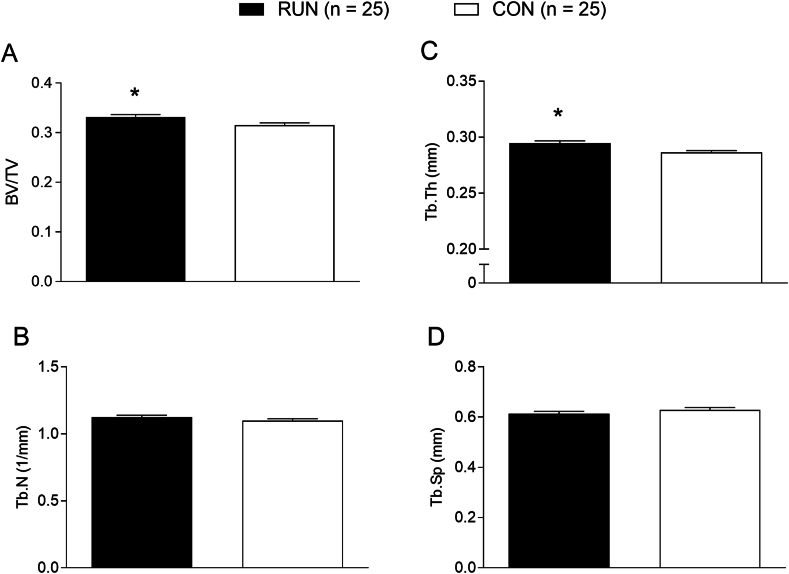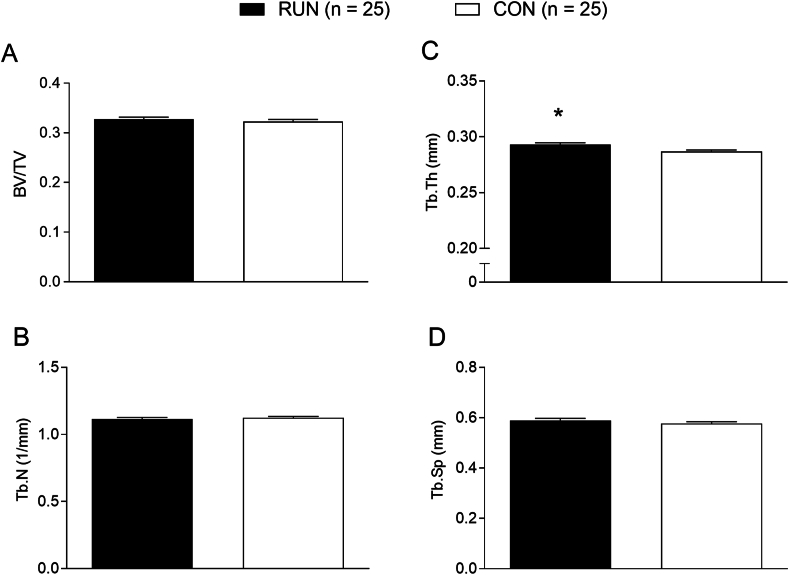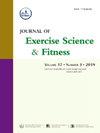Comparison of trabecular bone microarchitecture between older males with and without a running habit: A cross-sectional study
IF 2.4
2区 医学
Q2 SPORT SCIENCES
引用次数: 0
Abstract
Objectives
Despite its prevalence among seniors, the impact of running on trabecular bone microarchitecture, especially in weight-bearing sites, remains relatively unexplored. This cross-sectional study aimed to investigate the impact of habitual running on bone health, specifically bone mineral density (BMD) and trabecular bone microarchitecture, in male older adults.
Methods
Twenty-five male recreational runners aged between 50 and 75 years old were recruited in this study (RUN; average running experience 7.5 ± 6.0 years, average monthly running volume 217 ± 120 km), and 25 age matched sedentary older males served as controls (CON). Dual-energy X-ray absorptiometry was used to obtain bone mineral density (BMD) measures at whole-body, bilateral proximal femur as well as lumbar spine for all participants. Magnetic resonance imaging was used to obtain trabecular bone microarchitectural parameters at distal femur and distal tibia for all participants.
Results
Findings revealed no significant difference in BMD between groups for all measured sites (all p > 0.05; d range 0.013–0.540). However, runners displayed higher bone volume fraction and trabecular thickness at the distal tibia (p = 0.012 and 0.001; 95 % CI of MD [-0.030, −0.004] and [-0.013, −0.004]; d = 0.739 and 1.034, respectively) and higher trabecular thickness at the distal femur (p = 0.002; 95 % CI of MD [-0.010, −0.002]; d = 0.907).
Conclusions
This study provides critical insights into the relationship between running and bone health in older adults, suggesting regular recreational running may positively influence trabecular bone microarchitecture, potentially enhancing bone strength and reducing fracture risk. These findings pave the way for future research to develop evidence-based exercise recommendations for an aging population.



有和没有跑步习惯的老年男性小梁骨微结构的比较:一项横断面研究。
目的:尽管在老年人中普遍存在,但跑步对小梁骨微结构的影响,特别是在负重部位,仍然相对未被探索。这项横断面研究旨在调查习惯性跑步对男性老年人骨骼健康的影响,特别是骨矿物质密度(BMD)和骨小梁微结构。方法:本研究招募了25名年龄在50 - 75岁之间的男性休闲跑步者(RUN;平均跑步经验7.5±6.0年,平均月跑步量217±120公里),25名年龄匹配的久坐老年男性作为对照组(CON)。采用双能x线骨密度仪测量所有参与者的全身、双侧股骨近端和腰椎的骨密度。所有参与者使用磁共振成像获得股骨远端和胫骨远端骨小梁微结构参数。结果:各测量部位骨密度组间差异无统计学意义(p < 0.05;D范围0.013-0.540)。然而,跑步者在胫骨远端表现出更高的骨体积分数和骨小梁厚度(p = 0.012和0.001;95%可信区间的MD[-0.030, -0.004]和[-0.013,-0.004];D = 0.739, 1.034),股骨远端骨小梁厚度增高(p = 0.002;MD的95% CI [-0.010, -0.002];d = 0.907)。结论:这项研究为老年人跑步与骨骼健康之间的关系提供了重要的见解,表明定期的休闲跑步可能对小梁骨微结构产生积极影响,可能增强骨强度并降低骨折风险。这些发现为未来的研究铺平了道路,为老年人提供基于证据的锻炼建议。
本文章由计算机程序翻译,如有差异,请以英文原文为准。
求助全文
约1分钟内获得全文
求助全文
来源期刊
CiteScore
5.10
自引率
3.60%
发文量
54
审稿时长
31 days
期刊介绍:
The Journal of Exercise Science and Fitness is the official peer-reviewed journal of The Society of Chinese Scholars on Exercise Physiology and Fitness (SCSEPF), the Physical Fitness Association of Hong Kong, China (HKPFA), and the Hong Kong Association of Sports Medicine and Sports Science (HKASMSS). It is published twice a year, in June and December, by Elsevier.
The Journal accepts original investigations, comprehensive reviews, case studies and short communications on current topics in exercise science, physical fitness and physical education.

 求助内容:
求助内容: 应助结果提醒方式:
应助结果提醒方式:


